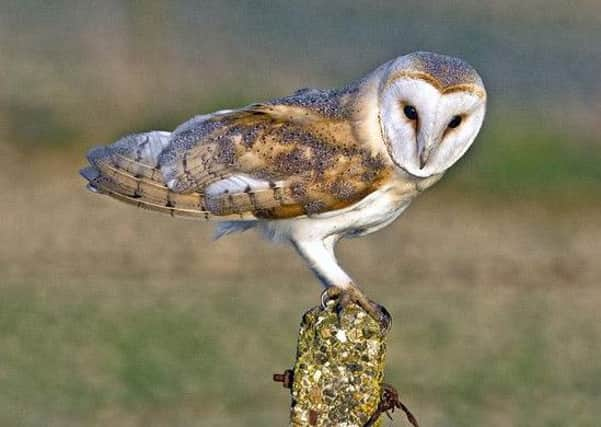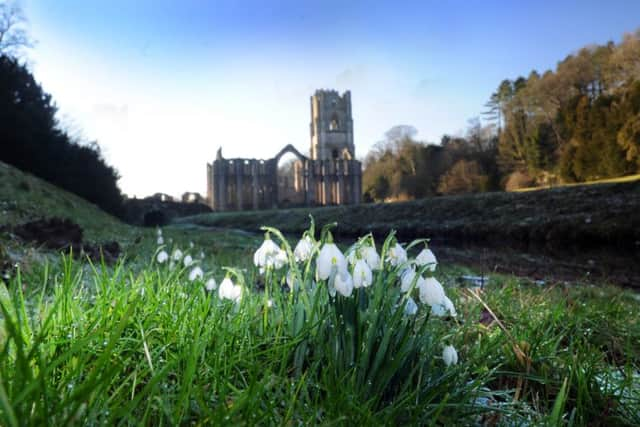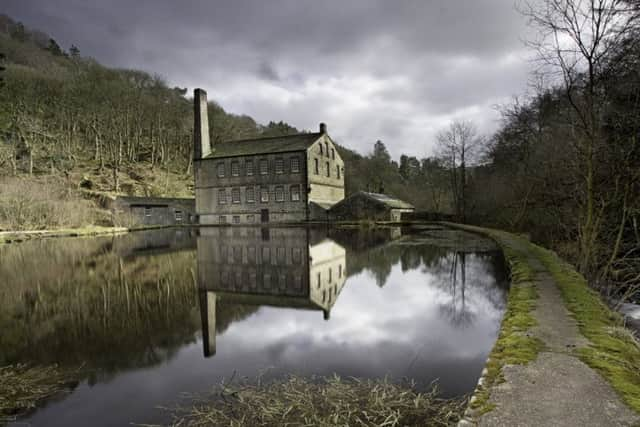Conservationists fear isolated wildlife will be wiped out by sudden winter weather


Concerns are rife for how the kind of unseasonal weather experienced this year is affecting native wildlife, and a new end of year report published today by The National Trust shows that it has been a decidedly mixed year for countryside species.
There have been some causes for celebration in the natural world, with barn owls being spotted for the first time in over 40 years at Malham Tarn in the Yorkshire Dales and, while nationally butterflies are suffering major declines, a purple hairstreak butterfly was recorded for the first time at Hardcastle Crags in West Yorkshire.
Advertisement
Hide AdAdvertisement
Hide AdBut conservationists are dreading the potential impact of a prolonged period of turbulent weather early in the new year - with isolated pockets of wildlife at greatest risk of being wiped out.


Stephen Morley, wildlife and countryside adviser for the National Trust in the north, said: “The concern is that with wildlife levels low and declining in many groups in the countryside, any adverse weather will have adverse effect on remaining wildlife populations.
“Where we have smaller, scattered populations of wildlife species, they may get knocked out altogether by severe weather.
“We have a lot of small, isolated wildlife reserves in Yorkshire so the impact of adverse weather can be greater there because species and wildlife are concentrated in these places, so it is vitally important our wildlife becomes better distributed across our landscapes.
Advertisement
Hide AdAdvertisement
Hide Ad“The chances are high for catastrophic impacts where we have small populations of declining wildlife subjected to extreme weather.”


The National Trust is working with partners such as tenant farmers to manage land sympathetically in support of biodiversity and Mr Morley said gardens too could be managed to work harder for threatened wildlife.
“Gardens are a great reserve for biodiversity and there are lots people can do with them to support wildlife by adding structure - this is one of the most important things. Have a complete mix of lawn, shrubbery, trees and, ideally, a pond. This structure attracts a wide range of birds and other animals.
“Another thing that’s important is not to be too tidy. Leave your perennials standing over the winter as this gives birds and bugs a source of food. Also, grow a wide range of different flowers because that attracts a wide range of species. Lavender and herbs are popular at the moment and they are good for bumblebees.”
Advertisement
Hide AdAdvertisement
Hide AdThe resurgence of the barn owl was a particular triumph, with the species having suffered major declines as a consequence of sustained harsh weather in previous years.
Spotted again after an absence of decades at Malham Tarn, barn owls have seemingly flourished this year because of improved conditions for hunting. A reduction in grazing pressure and the planting of young woodland has helped support good numbers of their favoured prey, the field vole. Barn owls were are also now regularly spotted at Ravenscar on the Yorkshire Coast and at Brimham Rocks, near Harrogate.
Otters successfully bred for the second time in three years at Malham Tarn and regular otter activity was also reported on the river Skell at Fountains Abbey and Studley Royal and on the river Rye at Nunnington Hall.
At the start of the year rangers and volunteers at Marsden Moor, West Yorkshire, in partnership with Moors for the Future, surveyed the mountain hare population and recorded 16 mountain hares over a 12km radius, and without late frosts to catch them out in the spring, hundreds of little froglets hatched in the American garden at Beningbrough Hall.
Advertisement
Hide AdAdvertisement
Hide AdThe National Trust looks after almost 250,000 hectares of land in England, Wales and Northern Ireland, and conducts an annual review to help paint a picture of how the year’s weather has affected the nation’s wildlife.
UNUSUAL WILDLIFE SIGHTINGS
A bioblitz on the Yorkshire Coast in August recorded 360 species and an unusual find in rockpools was a yellow sea slug (Berthella plumose) at Ravenscar.
A purple hairstreak butterfly was recorded for the first time at Hardcastle Crags, West Yorkshire, a species more commonly found in the South, and unusual bird sightings at Fountains Abbey and Studley Royal included a cormorant stopping by at Studley Royal Lake - the first recorded on site - as well as an osprey and a pair peregrine falcons. The latter had been spotted many times in 2014, but only reappeared in late November this year.
Small birds fared well at the North Yorkshire estate, with a robin family making a nest inside a bird hide there. They raised three chicks in one nest before building another and raising a further six chicks.